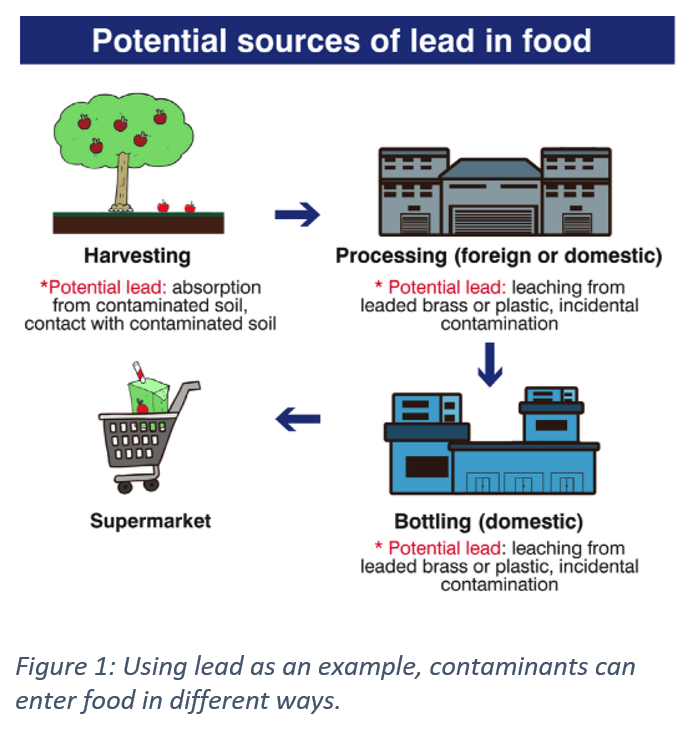- Resources
- We know heavy metals are in food. Here’s how the Baby Food Council is taking on that challenge.
Resources
We know heavy metals are in food. Here’s how the Baby Food Council is taking on that challenge.
Published: October 17, 2019 by EDF Staff
This week, a new investigative report by Healthy Babies Bright Futures, a children’s health advocacy group, revealed that there is still more work to do in eliminating contaminants of concern, including lead, arsenic, and cadmium, from infant and toddler food. As noted in the report, at least one of these toxic heavy metals was detected in 95 percent of the 168 baby food samples tested. The good news: earlier this year, leaders in the sector supported by academic, government, and NGO partners and advisors started working together on the issue via the pre-competitive Baby Food Council.
The Baby Food Council, established earlier this year by Cornell University and Environmental Defense Fund, has committed to reduce heavy metal contamination as low as reasonably achievable by identifying and spreading best supply chain management practices. In addition to Cornell and EDF, current Council members include five of the top companies in the $7 billion dollar U.S. baby food market Beech-Nut Nutrition Company, Campbell Soup Company (Plum Organics), Gerber Products Company, The Hain Celestial Group (Earth’s Best), Happy Family Organics and the aforementioned Healthy Babies, Bright Futures. The U.S. Food and Drug Administration (FDA) and the U.S. Department of Agriculture also serve as technical advisors. This diverse group of organizations presents a promising opportunity to reduce the presence of contaminants at scale.
Why this matters
 Food production is complex; there are many opportunities for chemicals harmful to human health to enter food before it reaches the plate. For several years, EDF has been drawing attention to the issue. In particular, EDF has documented the implications of lead contamination in foods for infants and toddlers and has identified strategies that companies can undertake to systematically tackle the issue. Heavy metals are never purposefully added to food, but these contaminants can potentially enter at different points in the process, throughout the supply chain (see Figure 1). While the FDA has taken important steps to address the issue of heavy metal contamination in food for children, EDF began to pursue a supporting strategy where leading food brands could collaborate to better protect the health of our youngest and most vulnerable.
Food production is complex; there are many opportunities for chemicals harmful to human health to enter food before it reaches the plate. For several years, EDF has been drawing attention to the issue. In particular, EDF has documented the implications of lead contamination in foods for infants and toddlers and has identified strategies that companies can undertake to systematically tackle the issue. Heavy metals are never purposefully added to food, but these contaminants can potentially enter at different points in the process, throughout the supply chain (see Figure 1). While the FDA has taken important steps to address the issue of heavy metal contamination in food for children, EDF began to pursue a supporting strategy where leading food brands could collaborate to better protect the health of our youngest and most vulnerable.
And we believe the Baby Food Council is poised to do just that. As EDF has seen in our almost 30 years of partnerships and collaborations with companies, when companies share their experience and insights, prioritize opportunities, and collaborate on cross-sectoral problem solving, transformation is possible. For example, EDF’s work with Field to Market, a leading multi-stakeholder collaboration to unite the U.S. agricultural value chain around sustainable agriculture, has helped growers and the supply chain advance practices that support resilient ecosystems.
To tackle heavy metals in baby food, this will mean examining not only farms as potential contaminant entry points but also other supply chain nodes such as processing facilities, and then working together to identify and test actionable solutions. By identifying, evaluating, and publicly sharing the effectiveness of different management practices to address heavy metal contamination, the Council’s activities have the potential to reinforce consumer confidence in the safety of the foods we give our children. In the long run, success here may also provide a road map for these and other food companies to address the broader array of contaminants that sometimes end up on our dinner plates.
EDF looks forward to our continued work with the Baby Food Council and the solutions that will emerge.
~~~~~~~~~~~~~~~~~~~~~
Additional resources:
